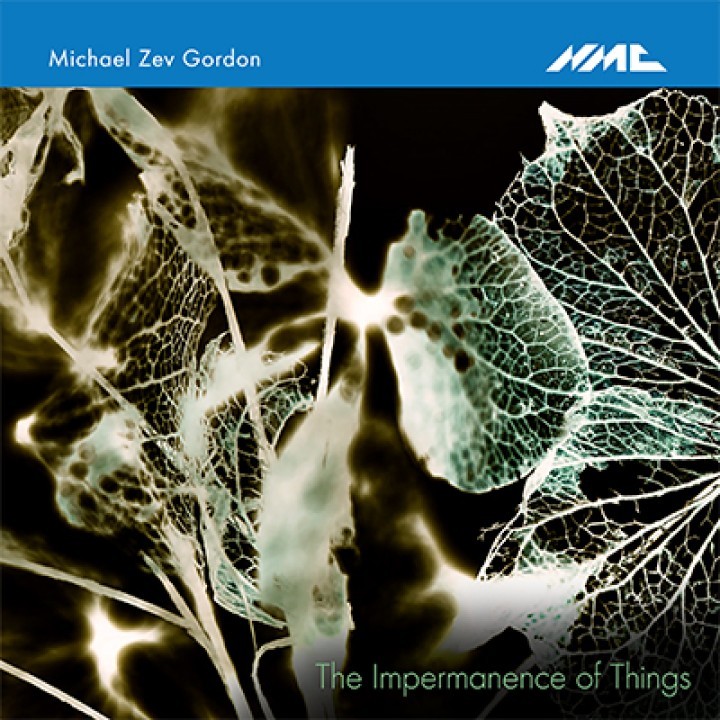The Impermanence of Things: Q&A with composer Michael Zev Gordon
3rd April 2024
Articles NMC RecordingsComposer Michael Zev Gordon on the themes and processes behind his new album, The Impermanence of Things, due for release by NMC on 19 April.
Why do you think the subjects of memory and loss have been so musically and creatively stimulating for you across your career so far?
I often express the extra-musical in my music, and am deeply drawn to ideas such as absence and longing. I particularly wish to evoke what I feel as the poignant gap between past and present. Memories are embodied in tonal materials (sometimes as quotations) which emerge from, or elide with, more dissonant surroundings. And this approach has been part of a wider project to develop an ‘inclusive’ musical vocabulary, putting tonality and atonality in the same orbit. It’s been very beneficial for me in widening my means of expression.
As well as looking to the past and to the future, the three works on this album are also ultimately concerned with this idea of ‘a search for serenity in the present’. How did you explore this musically in the works on this album?
Looking towards the past or future is indubitably full of emotion. Nevertheless, for me the heart of a happy life is the tranquil present. Easy to say, very hard to achieve. But it is possible, I think, to point to such a place with music. In each piece in the album, especially towards their ends, musical tensions ease. I don’t think of these places, though, as traditional places of ‘resolution’. Rather, movement becomes stilled or suspended or sometimes ‘lifts upwards’.
Can you tell us about Bohortha, the hamlet in Cornwall that the first work on the album is named after? What does it represent to you and how did its image inspire the work?
I love the name Bohortha; it sounds almost Biblical to me. But it is in fact the tiniest of places on the very beautiful Cornish peninsula, with an equally suggestive name, Roseland. I came across it, by chance, on a family holiday. The way the road (at least in my imagination!) ends there, and leaves you with nothing but sea and silence, quickly took on for me both a real and symbolic image of peacefulness.
Your Violin Concerto follows some conventions of the form – its three-movement structure, for example – while simultaneously eschewing other norms. How conscious of this were you when you were writing the piece?
Very. I’m interested here in taking the listener from the known to the less known. So, the three-movement framework is intact, but the conventional fast finale comes second, while the slow movement is third. The cadenza (in movement 3) is more ‘anti-cadenza’, turning towards something intimate. Looking across the whole of the concerto, a conventionally directed movement 1 moves to something more circling in movement 2, and then towards a sense of ritual and incantation in the final movement.

You worked closely with the violin soloist Carolin Widmann as part of the compositional process behind the work. Can you tell us about this experience and how it played into the music you wrote?
I knew Carolin could play Mendelssohn and Feldman with the same commitment and beauty from recordings. That range would already have been enough for me. But when I visited her in her home in Leipzig and got to know her playing in more detail, I was astonished by how many ways she could make the violin sing. I took great inspiration from that, and tried to bring many colours of cantabile, from the most fragile to the wildly energetic, into the piece.
How would you describe the role that the piano plays in the final work on the album, 'The Impermanence of Things'?
I knew Huw Watkins’ playing too before writing The Impermanence of Things, and was equally drawn to his capacity to be as at home in the traditional as the modern. But, as opposed to the Violin Concerto, I wanted the role of the solo instrument in The Impermanence of Things to be more integrated within the ensemble. The lines intertwine, echo and amplify each other. There are moments of a soloistic voice, but, like so much in the piece, it is fleeting. The piano, here, is first among equals.
This piece also features electronics – is this something that you use often in your composition?
Electronics are a rare venture for me. But they add an important extra layer of echoes and resonances to The Impermanence of Things and, in particular, help to create a sense of ‘temporal distance’. All the electronic sounds are gentle distortions of fragments from the piano part, crafted by Ian Dearden of Sound Intermedia.
Both 'Bohortha' and 'The Impermanence of Things' are comprised of many short movements. Why do you think you are drawn to writing in this way?
I swing between writing extended movements and short ones – and try to keep myself doing both! I find they lead to very different expressive ends, not only formal ones. The way I write long movements leads me into processes of gradual change, whereas the shorter movements have to make their mark - to capture a feeling, a kind of motion, an image – instantly. Some of these small pieces are more fragments than wholes, absence and transitoriness both being, I think, very well evoked by things being cut short.
The titles of your works and their movements are often particularly poetic and evocative. At what stage in the process do you tend to name your pieces, and where do these names come from?
When the commission for Bohortha came, the name, and all it embodies, entered my head before I wrote any of the music. But the titles of the individual pieces are, rather, pointers towards the kind of movement or feeling I knew I already wanted to put into the music. Much was the same with The Impermanence of Things, though in that work all of the individual titles are lines from Rilke, from either his Duino Elegies or the Sonnets to Orpheus. I chose the particular phrases as much for their images as meanings.
NMC has released quite a number of your recordings over the years, including 'On Memory' (NMCD144) which came out in 2009. How do you see this new album fitting into your catalogue of recordings?
Well, I’m certainly still ploughing some of the same expressive furrows in the new album. But it’s a particular pleasure for me that NMC have been able to support it, as it will show how I explore these themes on a larger canvas and with a much wider palette of instrumental colours and combinations.
Related Music

Michael Zev Gordon: The Impermanence of Things
NMC Recordings
Michael Zev Gordon is a composer whose music is deeply engaged with the subjects of memory and loss, together with a search for serenity. These themes are central to the three large-scale works which comprise this new portrait album.
Find out more & buy
